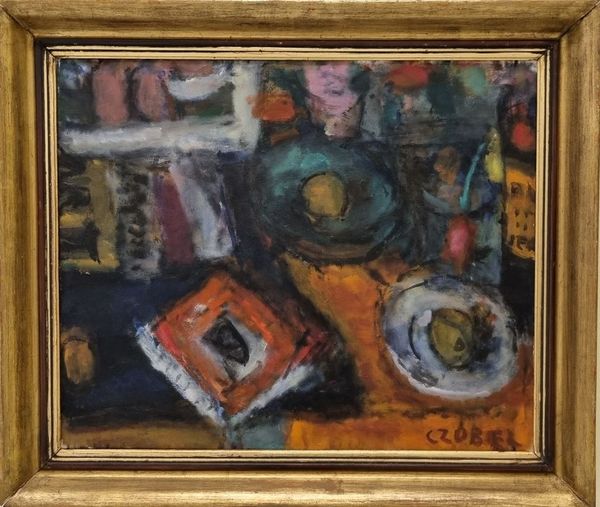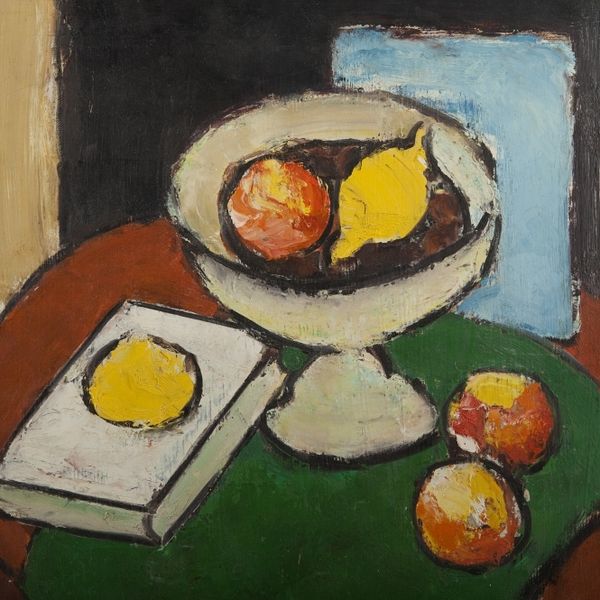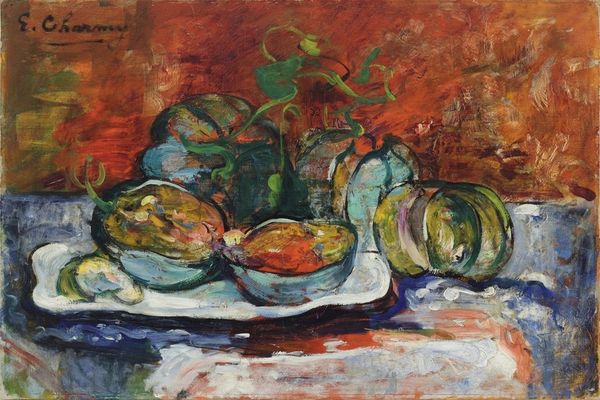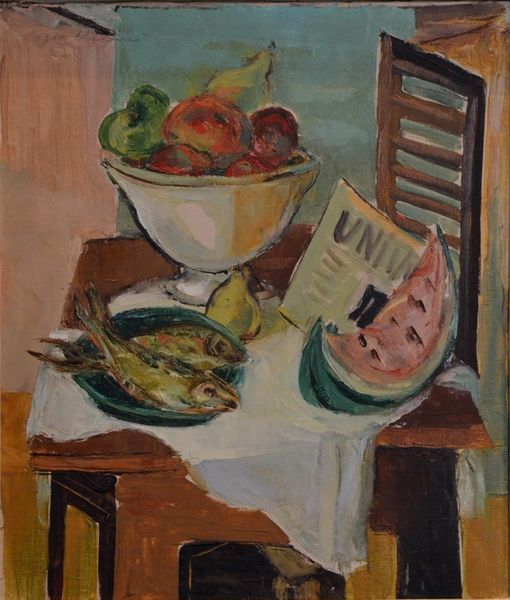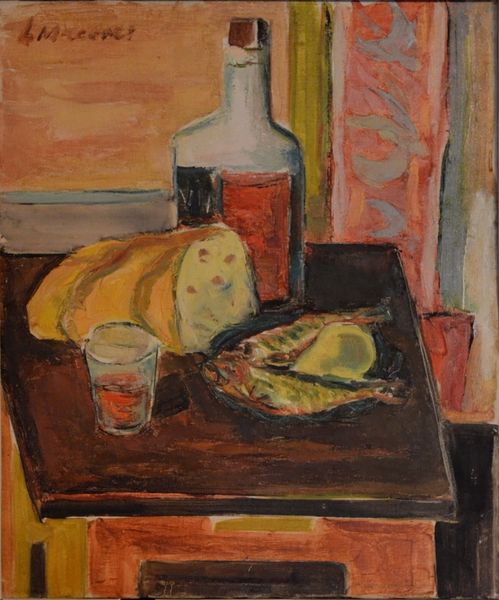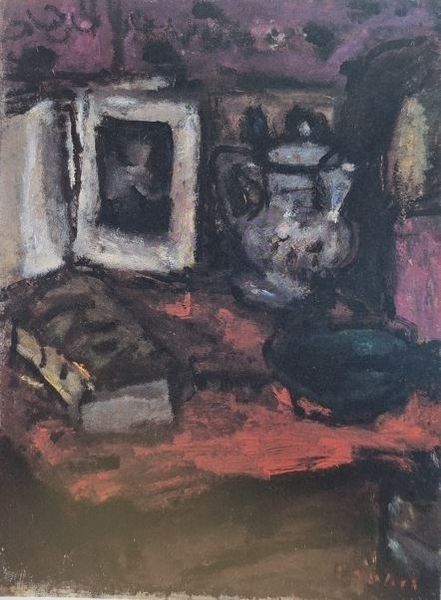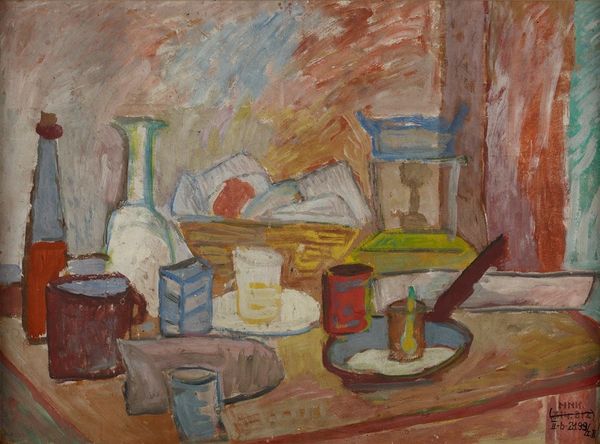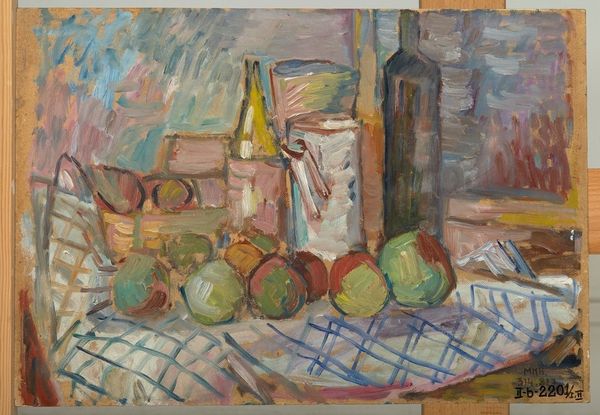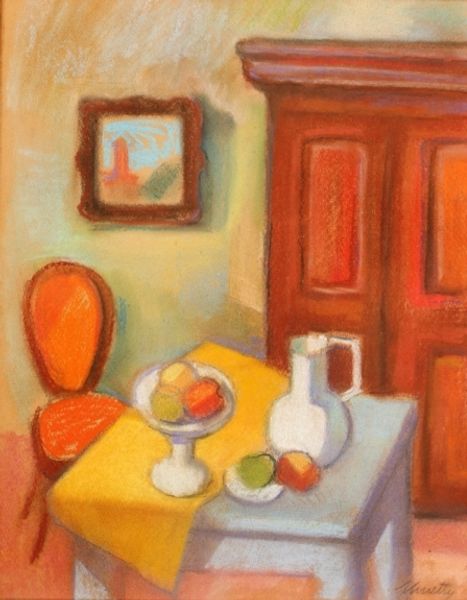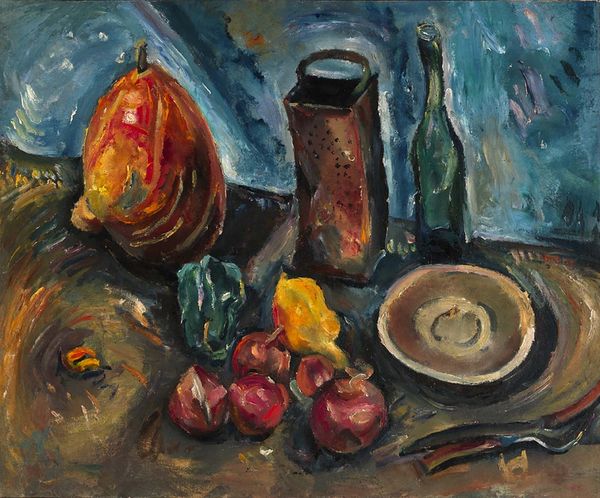
painting, oil-paint, impasto
#
painting
#
oil-paint
#
figuration
#
impasto
#
modernism
Copyright: Bela Czobel,Fair Use
Editor: Here we have Béla Czóbel's "Nature Morte," painted in 1963. It’s an oil painting with quite a bit of texture, impasto I believe it's called. It feels intimate and immediate. What do you see in this piece? Curator: Beyond a still life, this evokes questions about access and privilege. Consider what "still life" represents in art history. It often depicts the possessions of the wealthy, doesn’t it? Here, we have books, potentially symbolizing knowledge and status alongside everyday objects, fruits, domestic items...Does Czóbel critique or celebrate bourgeois life? How does his expressionist style contribute? Editor: That's a great question, I was thinking only about the subject and style and never about any socio-economic aspect, but how can we read more of it in the work? Curator: Note the layering of impasto. Is this a way of reclaiming this conventional theme from the art establishment? Is he perhaps dismantling notions of a static, perfect bourgeois interior through its visual rendering? Look at the composition, its almost claustrophobic arrangement with the strong, earthy tonality and aggressive brushwork. Does that challenge ideas of conventional beauty, maybe even of class? Editor: That is certainly a contrasting perspective to take, but what are the politics behind? I do get your reading of it from the style. Curator: Precisely. Czóbel was Hungarian, later lived in Paris, and then Germany… always navigating different cultures and, presumably, power structures. How might his immigrant experience, his movement through Europe during times of great upheaval, inform his choices of subject and his distinct expressive style? Maybe the nature morte becomes a way to explore shifting identities, to challenge norms of identity and aesthetics. Editor: I never thought of still life in these ways before! Thanks to you, it seems the artwork now carries all the weight and experience of its creator and also allows us to explore ideas about the broader society. Curator: Exactly. It pushes us beyond the mere aesthetic to understand how art acts as a crucial visual record to dissect prevailing structures and challenge social orthodoxies.
Comments
No comments
Be the first to comment and join the conversation on the ultimate creative platform.
